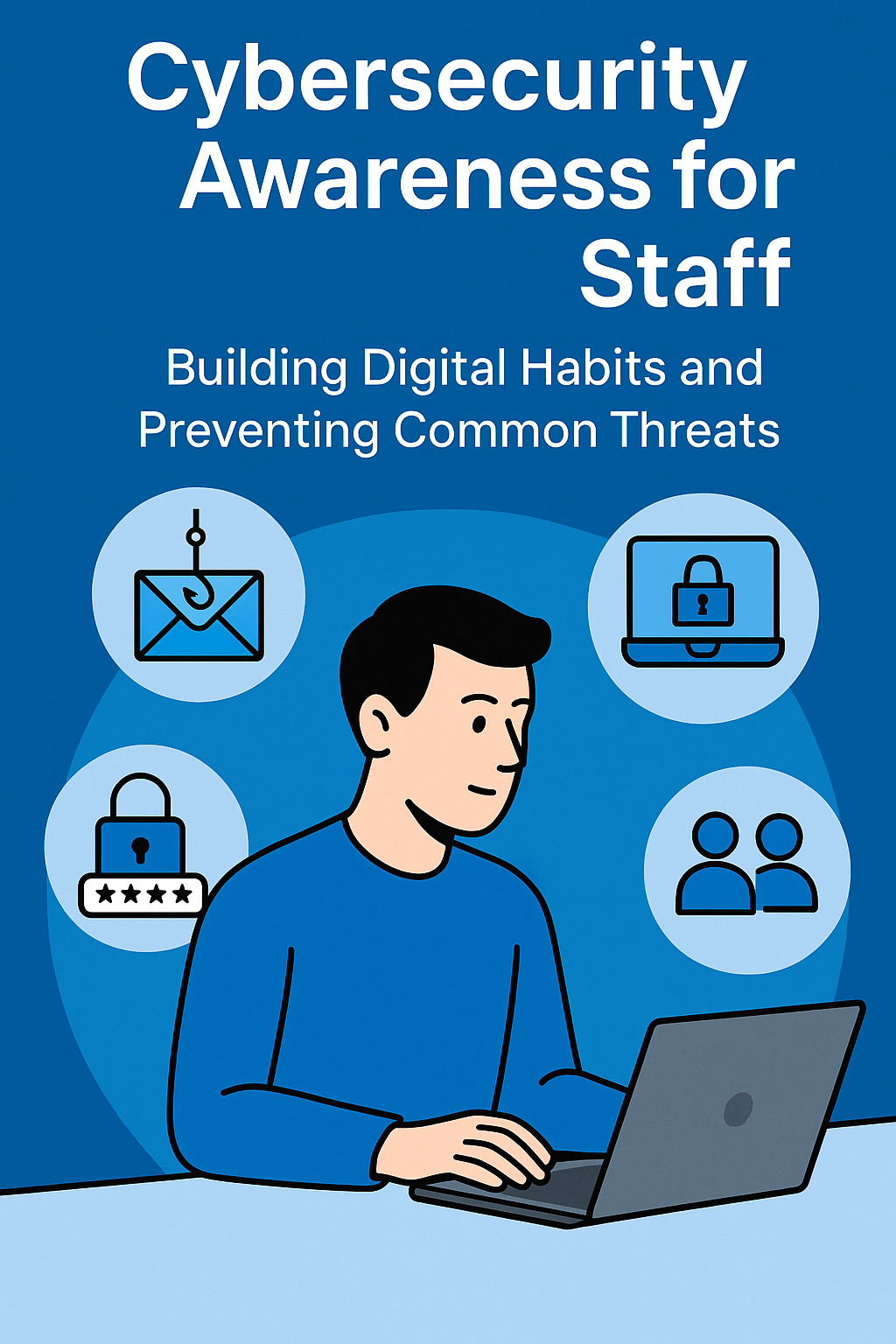Cybersecurity isn’t just an IT issue—it’s a people issue. While firewalls and antivirus software are essential, the most common threats to your business often start with a simple click. That’s why building strong digital habits across your team is one of the most effective ways to protect your organization.
In this article, we’ll explore how to foster cybersecurity awareness among staff, reduce human error, and create a culture of digital responsibility.
Why Cybersecurity Awareness Matters
According to industry reports, over 90% of successful cyberattacks begin with human error—most often through phishing emails, weak passwords, or unsafe browsing habits. Even the most advanced security tools can’t prevent a breach if employees aren’t trained to recognize and avoid threats.
Cybersecurity awareness training helps staff:
- Recognize suspicious emails and links
- Understand the importance of strong, unique passwords
- Safely handle sensitive data
- Report incidents quickly and effectively
Common Threats Every Employee Should Know
Training should focus on the most frequent and damaging threats employees are likely to encounter. These include:
1. Phishing and Social Engineering
Phishing emails often mimic legitimate messages to trick users into clicking malicious links or sharing credentials. Social engineering tactics may involve phone calls or messages that exploit trust or urgency.
2. Ransomware
Ransomware attacks encrypt company data and demand payment for its release. These often start with a single employee opening a compromised attachment or link.
3. Password Reuse and Credential Theft
Using the same password across multiple platforms increases the risk of credential stuffing attacks. Encourage the use of password managers and multi-factor authentication (MFA).
4. Unsafe Use of Public Wi-Fi
Remote workers connecting to unsecured networks can expose company data. Staff should be trained to use VPNs and avoid accessing sensitive systems on public Wi-Fi.
Building Strong Digital Habits
Cybersecurity awareness isn’t a one-time event—it’s a mindset. Here’s how to help your team build lasting digital habits:
- Make Training Ongoing: Offer short, regular sessions that keep security top of mind. Monthly tips, quarterly refreshers, and simulated phishing tests are effective.
- Keep It Practical: Use real-world examples and interactive content to make training relevant and engaging.
- Encourage Reporting: Create a no-blame culture where employees feel safe reporting suspicious activity or mistakes.
- Lead by Example: When leadership models good security behavior, it reinforces its importance across the organization.
Tools That Support Awareness
Technology can reinforce good habits. Consider implementing:
- Email filtering and phishing simulations to reduce exposure and test awareness
- Password managers to encourage strong, unique credentials
- Endpoint protection to detect and block threats at the device level
- Security dashboards to track training completion and risk levels
Final Thoughts
Cybersecurity awareness is one of the most cost-effective ways to reduce risk. By helping your staff build strong digital habits and recognize common threats, you’re not just protecting data—you’re empowering your team to be part of the solution.
Looking to implement a cybersecurity awareness program that works? Let’s talk.








